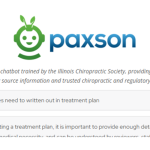
Chiropractic Prepayment Plans

CHIROPRACTIC PREPAYMENT PLANS – GOOD BUSINESS OR RISKY BUSINESS?
In difficult economic times, physicians understandably may find themselves considering any number of business promotions to increase the “bottom line.” One of these enticing practices is the use of chiropractic “prepayment plans” in which patients pay upfront for a certain number of office visits. Some practice management consultants encourage the use of these plans as a way of increasing revenue. The plans may be effective in increasing receipts, but are they legal in Illinois?
The Illinois Division of Insurance (DOI) has not issued a formal opinion on prepaid medical plans. The DOI reserves comments until they are provided with the specifics of a particular plan. Thus, the Division apparently has not issued either a blanket prohibition or approval of these plans but reviews them on a case-by-case basis. However, as discussed in more detail below, the DOI applies the rule that an organization that assumes risk in a business arrangement may be engaged in the practice of insurance, for which an insurance license is required.
In general, therefore, prepayment programs do not appear to be inherently illegal, but may require insurance licensure, depending on how they are structured. It is the operation of some of these programs without insurance licensure that is problematic in Illinois. As a result, these programs are unworkable for physicians as a practical matter, because most physicians do not want to be in the business of insurance. These types of prepaid plans must be distinguished from cases where the physician has evaluated and diagnosed the patient with a particular pathology and determined that a certain treatment plan is required, but has agreed to accept payment in advance, either in a lump sum or in installments. Those types of payment arrangements probably do not constitute the business of insurance.
LICENSING
The distinction between prepayment programs that require licensure and those that do not appear to reside largely in the assumption of risk. Sometimes prepayment plans are used for wellness care that is not covered by the typical health plan. In a plan that is not based on an identified diagnosis and need for a particular treatment, the patient pays a set amount each month and the administrator of the plan (whether physician or non-physician corporation) assumes the risk that the patient will need or use medical care. The patient is entitled to care on an as-needed basis, ranging from little to no treatment to extensive treatment. The plan generally covers everything except personal injury and worker’s compensation cases.
On the other hand, where the doctor examines the patient first, diagnoses a condition needing treatment, creates a treatment plan for a specific number of sessions over a designated period, and identifies a set cost for the treatments, the doctor has already determined the need for, and extent of, required care, which is less likely to be interpreted as the assumption of risk by the doctor. This situation is comparable, for example, to an orthodontist requiring full or partial prepayment for treatment over an extended period of time.
CHIROPRACTIC PHYSICIANS AS INSURERS
The Illinois Insurance Code does not define the term “insurance,” so Illinois case law has developed a number of elements to determine, in a legal sense, is meant by “insurance.” The elements of an insurance contract are indemnity against loss, the spreading or shifting of risk and the payment of a premium for the assumption of risk. It seems likely that a prepaid chiropractic care plan would be construed to have all of these elements, because the doctor would be assuming the risk that the patient might avail himself or herself of chiropractic care, and the patient would be paying a premium in exchange for the doctor’s assumption of that risk. This would be the case even where the prepaid plan had limits on benefits, because the doctor is still assuming the risk that the patient will use those benefits.
Additionally, if the services are not covered under the patient’s health insurance, it is a good idea to review your preferred provider agreements to make certain that they do not prohibit billing patients for non-covered services. If so, you would obviously not be able to use the prepayment program for those patients. Most PPOs allow the doctor to bill patients for non-covered services, as long as the insured has written notice at the time of examination and agrees to pay for specifically identified non-covered services.
INCENTIVES, CANCELLATIONS, AND REFUNDS – THE BIGGEST PITFALLS
One of the biggest license discipline categories for doctors using prepayment plans is the allowing of discounted rates for certain purposes but refusing to allow the discount when calculating a refund if the patient cancels the plan. Typically, as part of the incentive to participate in the prepayment plan, the doctor charges less than his or her usual fee for services actually rendered. However, if the patient cancels the plan, some doctors increase the charges to full “retail” when calculating the refund, sometimes resulting in no refund at all. This is probably the biggest reason for patient complaints about prepayment plans to the Illinois Department of Financial and Professional Regulation. The use of discounts is risky in general and is not recommended, but if you must use them in prepayment plans, when a patient cancels, you should base your refund on the same discounted fee structure that you quoted the patient. In other words, calculate the refund by subtracting the visit fees at the quoted, discounted rate from the full amount paid, and give the patient the balance.
For example, the doctor’s usual rate is $50 per visit, but the prepayment plan gives the patient a rate of $30 per visit and the patient prepays $1,000. After using 10 visits, the patient cancels. The refund should be calculated as follows: $1,000 minus $300 (10 visits x $30= $300) = $700 total refund. The refund should NOT be calculated by charging $50 per visit x 10 visits and deducting $500. Even if the doctor claims he or she provided extra services, charging any more than the quoted rate is misleading to your patients and invites a regulatory investigation.
CONCLUSION
Therefore, the conservative approach is to limit the acceptance of “prepayment” to cases where you, the physician, have examined and diagnosed the patient and identified a need for a certain number of treatments over a period of time. You should carefully document the need for treatment in the patient record, not only for the usual reasons but to avoid any appearance that you are engaging in the business of insurance by assuming the risk of an open-ended need for treatment. It may be tempting to in the short run to accept prepayment from patients who may not even need or use your care, but more costly in the long run if you are deemed to be operating as an insurance business. Finally, if you must use prepayment plans, adhere to your quoted fees when calculating a refund in the event of a cancellation.
















